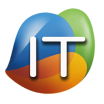In today’s fast-paced business world, maximizing employee productivity is essential. However, many companies struggle with outdated technology, cybersecurity issues, and technical glitches that slow down productivity and frustrate employees. That’s where IT managed services come in. With proactive support, cutting-edge solutions, and ongoing maintenance, IT managed services can help employees work faster, smarter, and with fewer interruptions.
In this blog, we’ll explore how IT managed services improve employee productivity, from reducing downtime to providing access to the latest tools and software. Let’s dive into how these services can empower your team to reach their full potential.
1. What Are IT Managed Services?
IT managed services involve outsourcing a company’s technology needs to a dedicated IT team. Managed service providers (MSPs) handle everything from cybersecurity to software management, enabling businesses to focus on their core operations. Here’s what IT managed services usually cover:
- Network Monitoring: Monitoring network health to catch issues before they cause disruptions.
- Cybersecurity: Protecting the network, data, and systems from threats like hacking and phishing.
- Software Management: Managing software updates, licenses, and troubleshooting.
- Data Backup and Recovery: Ensuring that data is backed up regularly and can be restored after a failure.
By taking care of these essentials, MSPs allow employees to work efficiently without tech interruptions or security concerns.
2. How IT Managed Services Increase Employee Productivity
When your tech systems work smoothly, employees can focus on their tasks instead of dealing with IT issues. Here’s how IT managed services directly impact productivity:
Minimizing Downtime with Proactive Support
Downtime can halt work and frustrate employees. With IT managed services, MSPs monitor systems 24/7 to prevent problems before they occur.
- Automatic Issue Detection: MSPs use advanced software to detect issues in real time and resolve them quickly.
- Reduced Downtime: Proactive monitoring minimizes disruptions, keeping teams on track.
Examples of Common Issues Addressed:
- Server crashes
- Network connectivity problems
- Slow computer performance
Providing Access to the Latest Technology
Many companies struggle to keep their technology up to date, which can slow employees down. IT managed services ensure businesses have the latest software, security patches, and tools.
- Regular Software Updates: Managed services handle software updates, ensuring employees always have access to the latest features and security improvements.
- Access to New Tools: MSPs provide access to productivity tools like Microsoft Office 365, Google Workspace, and collaboration apps.
- Faster, Better-Equipped Systems: With updated tools and resources, employees can work faster and more efficiently.
Improving Cybersecurity for Peace of Mind
A secure network keeps employees focused on their work instead of worrying about data breaches or malware.
- Real-Time Threat Monitoring: MSPs monitor systems for cyber threats, protecting company data.
- Employee Security Training: Managed services offer training on recognizing phishing and other cyber threats.
Examples of Security Solutions:
- Firewalls and antivirus software
- Multi-factor authentication
- Data encryption
Supporting Remote Work with Reliable IT Solutions
With remote work becoming common, employees need strong IT support wherever they are. IT managed services help ensure remote employees stay connected and productive.
- Remote Access Solutions: MSPs set up secure VPNs and remote desktop solutions for easy access to company resources.
- Cloud-Based Tools: Managed services provide cloud tools that allow employees to work from anywhere.
- Remote Troubleshooting: If a remote worker faces a technical issue, MSPs can often resolve it without needing to be onsite.
3. Key IT Managed Services That Directly Impact Productivity
Managed Cloud Services
Cloud computing allows employees to access data and applications anytime, anywhere. Managed cloud services provide secure, fast, and scalable cloud solutions.
Benefits:
- Reduces dependence on physical hardware.
- Provides real-time access to files and applications.
- Ensures reliable data backup and recovery.
Examples of Cloud Tools:
- Microsoft OneDrive for cloud storage
- Google Workspace for collaboration
- Slack and Microsoft Teams for team communication
Help Desk Support
A responsive help desk allows employees to solve technical issues quickly, minimizing disruptions to their work.
How It Helps:
- Offers immediate assistance for software glitches and connectivity problems.
- Provides clear instructions for resolving minor issues.
- Gives employees confidence that help is available whenever they need it.
Typical Help Desk Services:
- Troubleshooting common issues like login errors or software crashes.
- Assisting with password resets and security questions.
- Handling more complex problems like hardware or network failures.
Software and Hardware Management
Outdated software and hardware can slow productivity and create frustration. IT managed services keep all software updated and hardware functioning optimally.
- Software Management: Ensures programs have the latest features and security patches.
- Hardware Maintenance: Monitors hardware health to detect issues before they escalate.
Unified Communications Solutions
Unified communications bring all forms of communication—voice, video, and messaging—into one system, making collaboration smoother.
Benefits:
- Allows employees to use a single app for phone, chat, and video.
- Makes it easy to switch between communication methods.
- Reduces confusion from using multiple apps for different types of communication.
Examples:
- Microsoft Teams: Combines messaging, video calls, and file sharing.
- Zoom: Offers video conferencing and webinar features.
- Slack: A popular tool for team messaging and collaboration.
4. Long-Term Productivity Benefits of IT Managed Services
In addition to short-term productivity boosts, managed IT services also provide lasting advantages.
Enhanced Employee Satisfaction
- Less Frustration: Reliable systems mean employees spend less time dealing with tech problems.
- Fewer Interruptions: Proactive monitoring and quick resolutions keep teams productive.
- Increased Confidence: Knowing there’s IT support available gives employees peace of mind.
More Time for Core Tasks
With IT managed services handling the tech side, employees can focus on what they do best.
Example Benefits:
- Sales teams can focus on customer engagement instead of troubleshooting their devices.
- Marketing teams can focus on creative projects instead of worrying about system crashes.
Better Data Management
Managed IT providers ensure data is organized, accessible, and secure, which helps employees work more efficiently.
- Data Backup and Recovery: Regular backups mean data is always safe, even after unexpected events.
- Data Organization: Managed services set up systems that organize data for quick retrieval.
5. How to Maximize the Benefits of IT Managed Services
Choose the Right Managed Services Provider (MSP)
- Questions to Ask:
- What specific services do they offer?
- Can they handle your company’s unique technology setup?
- Do they provide 24/7 support?
Communicate Goals and Expectations
- Define Priorities: Let your MSP know which productivity factors are most important.
Encourage Employee Participation
- Offer Training: Basic training on using IT support systems helps employees feel more comfortable.
- Create a Feedback Loop: Ask employees for feedback on IT services to continuously improve the experience.
With IT managed services, companies can streamline processes, enhance security, and keep their employees focused on core tasks. By providing proactive support, reliable help desk assistance, and access to the latest tools, managed IT services directly boost productivity and create a happier, more efficient workforce.
To learn more about how TrueITpros can help your company with Boost Employee Productivity with IT Managed Services, contact us.




